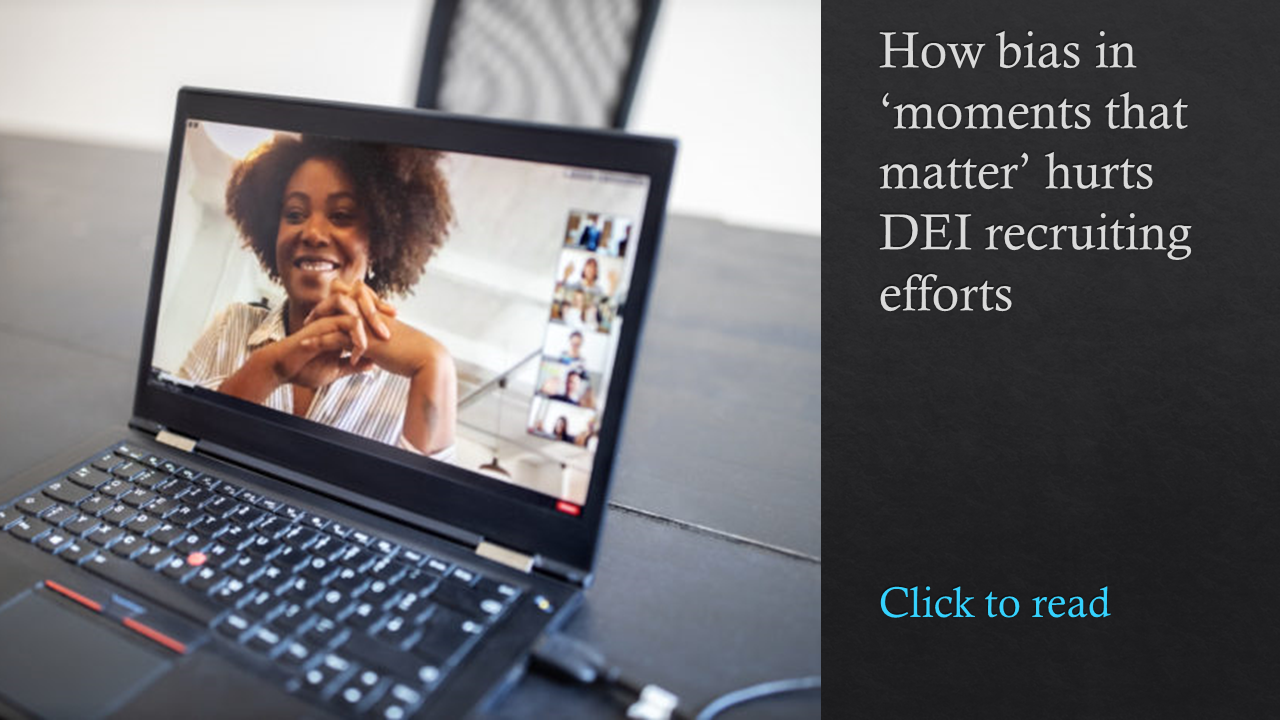For workers, onboarding can be a draining process even during the best of circumstances. In fact, Gallup found back in 2019 that just 29% of new hires said they felt fully prepared and supported after being onboarded. With new challenges created by the changes in work over the past year, companies need to overhaul their onboarding strategies to address longstanding shortcomings.
In the new hybrid world of work, it’s more important and challenging than ever to ensure employees feel like they understand an organization’s culture, goals, and vision from the start. As we settle into this new era, the way employees onboard must evolve along with every other aspect of how employees work, communicate, and collaborate. Here are six approaches organizations should embrace.
Related: How to embrace the new world of hybrid work
Start onboarding long before a new employee’s first day.
Regardless of an organization’s best intentions, an employee’s first day is often overwhelming. They are typically asked to handle a large amount of administrative work, learn about their role and sometimes even begin work, all while trying to feel out company culture and meet a new group of coworkers.
For this reason, it’s important to implement a preboarding period that starts the moment a new employee signs their offer letter. This period is one of the first experiences an employee will have with a company and can be used as a time to introduce new hires to the culture and lay a foundation for engagement.
Related: 3 strategies for meaningful employee engagement–long-term
The preboarding process should be streamlined across teams and departments—including HR, IT, legal, facilities and procurement. In a hybrid environment, cross-departmental coordination helps ensure a shared awareness of a new hire’s unique work parameters and locations. This shared context removes administrative confusion and ensures new hires have what they need, where they need it, before day one.
Emphasize personal connection over paperwork.
In the pre-COVID-19 era, employees often learned more about their new company and colleagues during informal conversations around the workplace versus in official information sessions.
This dynamic doesn’t exist to the same degree in the hybrid work era because organic opportunities for interaction are harder to come by. For many new employees, even a small question asked via Microsoft Teams or Slack can feel like an intrusion on a colleague.
Especially in an employee’s first few days, focusing on connections over processes can have a large impact on morale and relationships.

In a hybrid environment, this is the time to introduce employees to their peers, learn about their background, and connect with them on a personal level that begins building the foundations of trust essential for team collaboration, no matter where all the team members are located. The employee gets to know who they’ll be working with, feels like a part of the team and knows who they can go to with inevitable questions.
Virtual-team welcome events and coffee dates should be part of any remote ramp-up process to prevent early feelings of isolation. This is also the time to connect new hires with affinity communities and to assign mentors.
Think about both people and places.
Employers of a hybrid or on-site workforce must be more conscientious about how workers and workplaces come together. The physical workspace has become an essential factor of employee experience. Both new and existing employees must feel safe, and it should be easy for them to navigate buildings, building services and building procedures. The intersection of people and places is not only a new priority for orienting new hires but for all employees.
Some workplace priorities that are emerging include reserving a desk or conference room and providing guidance to help employees navigate an office. For example, when an employee books a desk, digital tools can ensure they are placed near their new teammates, trigger learning on health and safety policies, ensure cleaning services prior to arrival and provide an interactive map guiding them to their destination. Onsite team members can also be notified of the new hire’s whereabouts so they can greet them in person.
In this new world of hybrid work, the workplace will be treated as a more deliberate destination used for specific purposes like collaboration. It’s important for every employee to understand expectations and how to use the space.
Think beyond the first 30 days.
Beyond onboarding, new hires or people moving into new positions need a tailored process for supporting their success in a specific role. Ramping up a new salesperson requires a different series of activities than ramping up a new park ranger. Onboarding brings new hires into an organization, but ensuring success in a new role often happens at a department or even an individual manager level. By enabling departments and managers to create tailored plans, the onboarding experience can transition into a best practice ramp-up plan extending far beyond the first week or even month. Organizations can create tailored programs that monitor progress, deliver training and schedule events with colleagues that keep them engaged regardless of where they’re working.
These longer experiences can be further customized based on role and function since a one-size-fits-all approach won’t be effective for every member of every team. By taking a more long-term and personalized approach to onboarding, managers can better set employees up for success.
Build cultures of feedback collection and implementation.
 Given that the entire planet has been collectively experiencing the COVID-19 pandemic, it would be unreasonable for anyone to expect every organization to get everything right on the first go. Organizations are still learning about which processes to adopt and which to jettison.
Given that the entire planet has been collectively experiencing the COVID-19 pandemic, it would be unreasonable for anyone to expect every organization to get everything right on the first go. Organizations are still learning about which processes to adopt and which to jettison.
The process of continuous learning and iteration should be built into the onboarding culture. Real-time feedback is vital as an employee moves through the various onboarding processes. For example, after signing up for benefits, an employee can be prompted to rate the benefits process on a 5-star scale and elaborate via text. This allows organizations to understand what is and isn’t working and make updates in real-time.
Organizations can and should also consider longer-term feedback. For example, at ServiceNow, one week into a new hires’ experience—and again at 45 days—our HR team surveys employees about their overall onboarding experience. This constant mode of iteration helps identify ways to improve onboarding and create a fruitful experience for employees.
Building a culture of listening should also extend to new employees’ relationships with their managers. Employees and managers should be comfortable giving and receiving feedback. In a hybrid environment, this two-way conversation is especially critical when managers don’t necessarily see the new employee every day.
Onboarding is everyone’s job.
 Onboarding has long been held back by friction, disjointed processes and disconnected teams. I believe the hybrid work era is challenging organizations to rethink their approach—and the changes made will be for the better.
Onboarding has long been held back by friction, disjointed processes and disconnected teams. I believe the hybrid work era is challenging organizations to rethink their approach—and the changes made will be for the better.
Teams will become even more intentional about the onboarding experience, creating more efficient and streamlined processes that allow every department to collaborate smoothly. The adoption of new digital frameworks designed to break down siloes and connect systems, processes and people will better set organizations and employees up for success.
This will create the organizational groundwork essential to ensuring that employees can thrive on day one—and long after.
Related: HR Tech Conference 2021: Maximizing tech for remote onboarding



